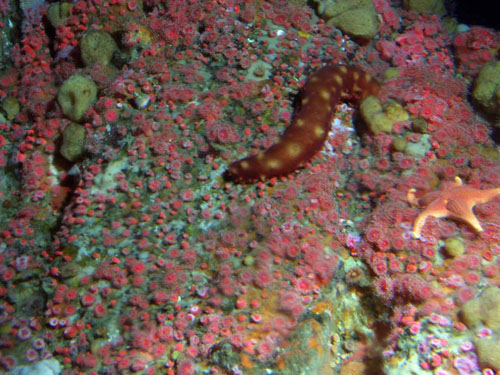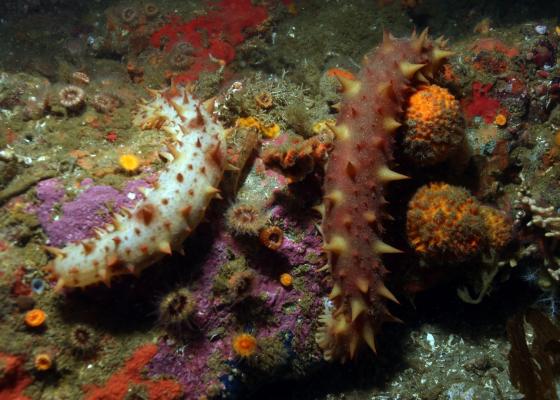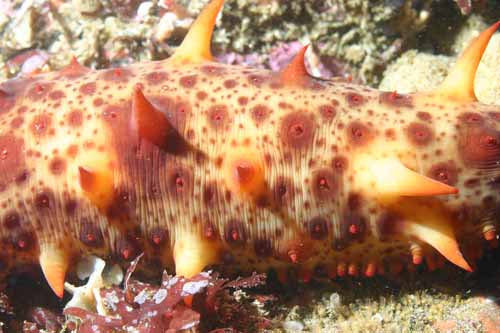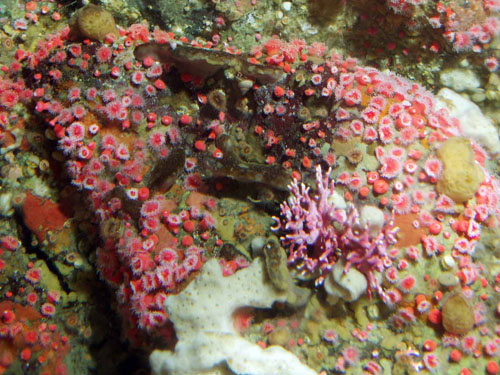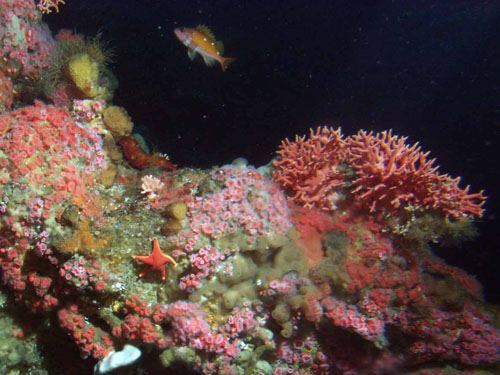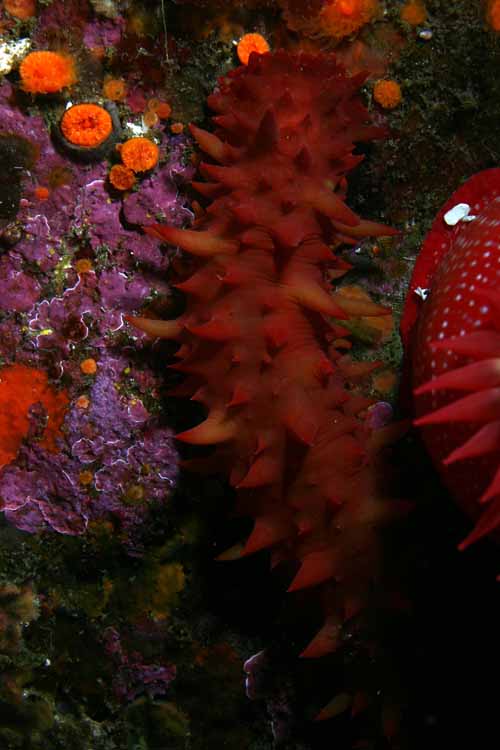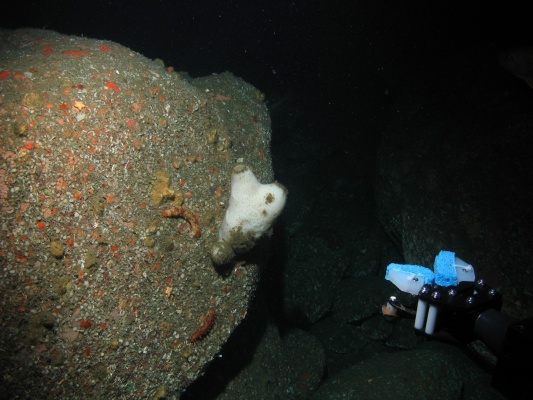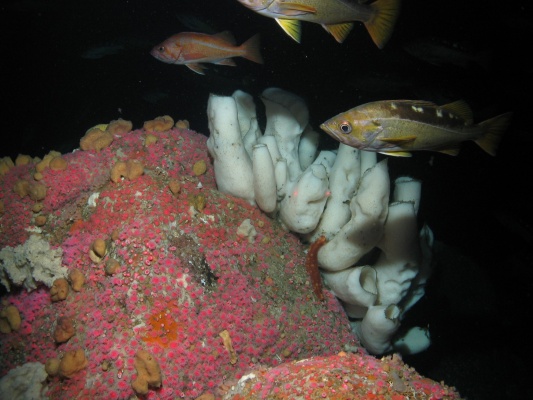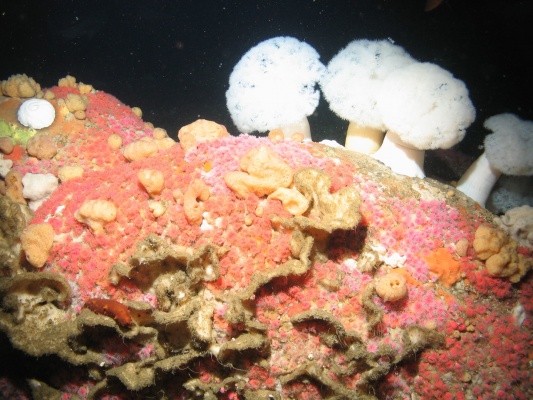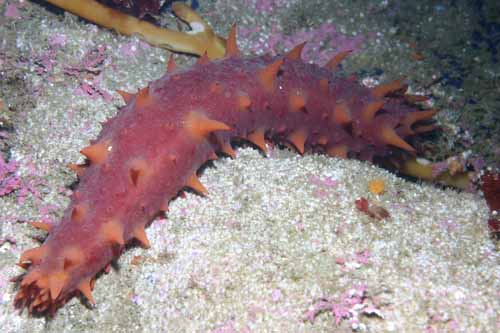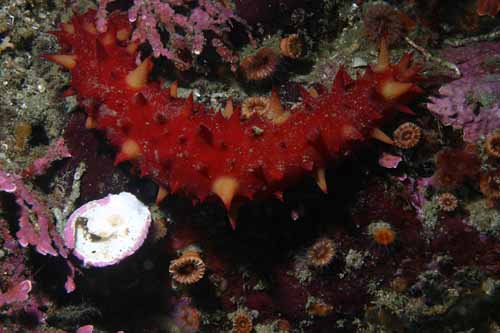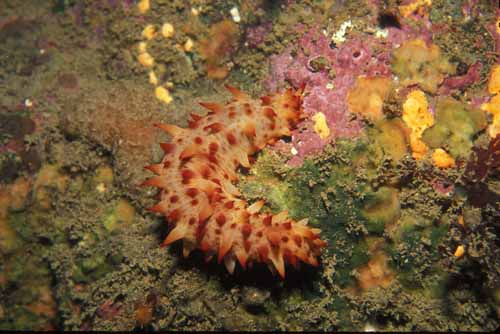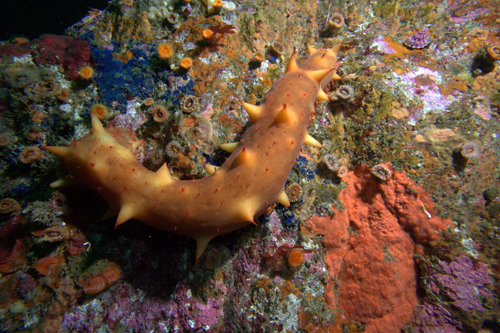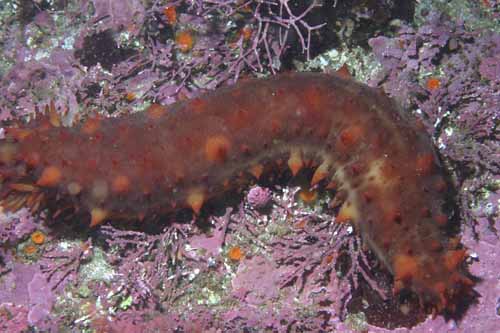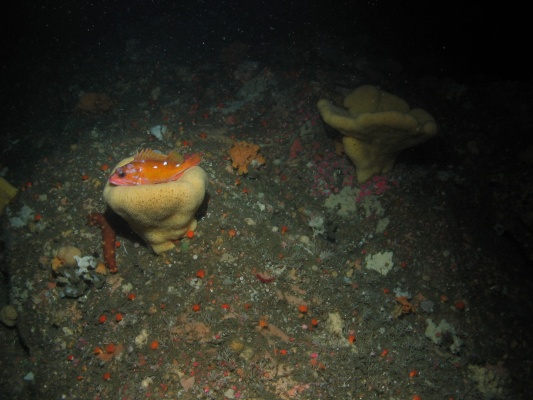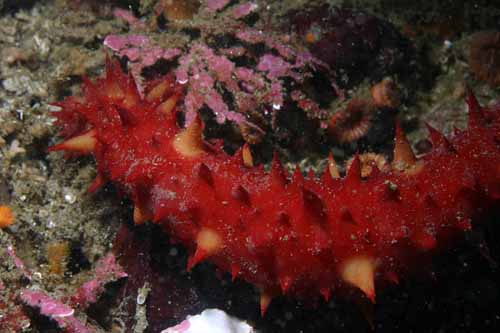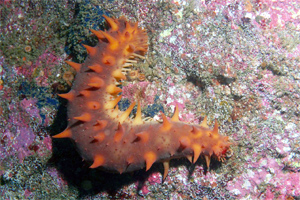
California sea cucumber
Apostichopus californicus
Overview
Key Features:
Numerous conical, thorn-like projections cover this large sea cucumber.Similar Species:
Warty sea cucumber (Apostichopus parvimensis)Primary Common Name:
California sea cucumberSynonymous name(s):
Parastichopus californicus, Stichopus californicus, Holothuria californicaGeneral Grouping:
Sea stars, urchins, cucumbers, sand dollars, brittle starsGeographic Range:
Alaska to Baja California
Alaska to Isla Cedros, Baja CaliforniaIntertidal Height:
-2 to 0 feet (-0.6006006 to 0 meters)Notes:
Uncommon in the intertidal.Subtidal Depth Range:
Minimum Depth: 0 meters or 0 feetMaximum Depth: 90 meters or 299.7 feet
Notes:
Can be very common at some sites.Habitats:
bay (rocky shore), bay (sandy shore), exposed rocky shore, kelp forest, protected rocky shoreAbundance:
Relative Abundance:
Uncommon to commonSpecies Description:
General:
This is one of two very large sea cucumbers encountered by divers in central California. Parastichopus californicus elongate, reaching lengths up to 40 cm and a diameter of 4-5 cm. Coloring ranges from a light or golden brown to deep red. Juveniles <15 cm are mottled, with light tan patches intermixed with red and brown. Adults can also be splotchy, with color often on the numerous conical papillae and their bases.Tube feet are located ventrally. While retaining the hallmark radial symmetry of echinoderms, there is also a derived bilaterally symmetry, with all the tube feet on the bottom. Lacking calcareous spines, ossicles or plates, cucumbers can contract when disturbed, transforming from a floppy, elongate tube into a very turgid, sub-spherical ball.
Distinctive Features:
Numerous conical papillae project from the upper parts of this cucumber, much like thorns on a rose. However, these papillae are fleshy and flimsy, offering little physical protection. Numerous tube feet are located ventrally.Size:
Body diameter: to 5 cm<BR> Length: to 40 cmNatural History:
General:
Parastichopus californicus is a very large sea cucumber, and roams the sea floor feeding on detritus. Like an earthworm, the cucumber ingests both detritus and inorganic material, digesting the organic material and passing a great deal of inorganic debris through. Often seen trailing behind these cucumbers are packets of processed inorganics.Although formidable in appearance, the conical papillae covering the cucumber are very flimsy. When disturbed, the primary defensive mechanism is to contract the longitudinal muscle bands, causing the cucumber to contract lengthwise, and with internal fluids, become very turgid and tough.
Predator(s):
They may be preyed upon by sea stars such as Pycnopodia helianthoides and Solaster.Prey:
Detritus.Feeding Behavior:
Deposit feederNotes:
Unlike other cucumbers that remain sedentary and filter the water column, Parastichopus californicus moves constantly, albeit slowly, dabbing the surface with its compact but highly branched oral tentacles. These sturdy tentacles have a large surface area and adhere both organic and inorganic material.Issues
Monterey Bay National Marine Sanctuary:
This species is commercially targeted in parts of California. It is unknown whether a fishery management plan is in place.References
- Carlton, J.T. 2007.
The Light and Smith Manual, 4th edition
Intertidal Invertebrates from Central California to Oregon
University of California Press. 1001 p.
- Gotshall, D. 2005. Guide to marine invertebrates : Alaska to Baja California. Sea Challengers, Monterey, CA. 117 p.
- Lamb, A. and B. P. Hanby. 2005. Marine life of the Pacific Northwest. Harbour Publishing. 398 p.
- Morris, R.H., D.P Abbott, and E.C. Haderlie. 1980. Intertidal Invertebrates of California. Stanford University Press, Stanford, California. 690 p.
- Pearse, V., J. Pearse, M. Buchsbaum, and R. Buchsbaum. 1994. Living invertebrates. Boxwood Press. 848 p.
Related Information
Photo Library
Click on an image below to view a larger version in the SIMoN Photo Library. You will also be able to view important information on each photo such as photographer, date, caption and more
